
Many SEOs and marketers wonder what's the difference between long tail vs short tail keywords. Understanding the difference between these two keyword types is important for when you're creating an SEO strategy for yourself or a client.
In this blog post, we’ll look at the main differences between long tail vs short tail keywords. You'll also learn how you can find these keywords using SEOptimer's keyword research tool.
What are Long Tail Keywords?
Long tail keywords are very specific phrases, typically consisting of three or more words, that target niche audiences with precise search intents.
These keywords are more descriptive and detailed compared to short tail keywords, allowing you to reach users who are looking for something very specific.
For example, phrases like "best running shoes for flat feet" or "affordable vegan protein powder" are long tail keywords.
These long tail keywords are useful for attracting targeted traffic and users to your site.
Although they have lower search volumes, they often result in higher conversion rates because they match the searcher's intent more accurately.
Long tail searches aren’t just longer. They’re also more specific. They usually have commercial or transactional search intent.
- Brian Dean, Founder of Backlinko
I mean let’s think for a moment, which keyword has more targeted search intent, “running shoes” or “best running shoes for flat feet”?
I think you would agree that the second one (which is also the long tail variant) is more targeted and will likely have higher conversion rates.
SEOs and marketers use long tail keywords in their content to better address the needs of their audience and improve the odds of ranking well in search engine results pages (SERPs).
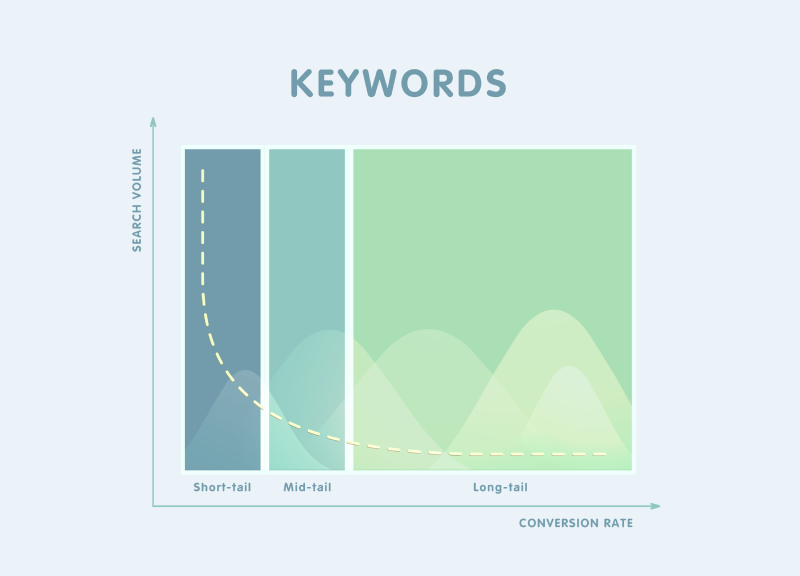
What are Short Tail Keywords?
Short tail keywords (also referred to as head keywords) are brief, general search terms that usually consist of one or two words.
They target a broad audience and cover a wide range of topics.
Examples of short tail keywords include terms like "shoes," "coffee," or "marketing."
Due to their general nature, these keywords tend to have high search volumes and are often highly competitive.
For instance, the search volume for “best running shoes for flat feet” is around 18,000 monthly searches, whereas the monthly volume for the short tail variant “running shoes” is more than 300k and higher competition.

Compared to long tail keywords, short tail keywords are great for attracting large amounts of traffic.
However, because they are so general, they often result in lower conversion rates compared to long tail keywords.
This is because users searching for short tail keywords may have diverse intents and are not always ready to make a purchase or take a specific action.
While short tail keywords can help increase visibility and drive traffic to your site, they should be complemented with long tail keywords to ensure you also capture more targeted and conversion-ready audiences.
Long Tail vs Short Tail Keywords: What’s the Difference?
The main differences between long tail and short tail keywords are:
- Length: Long tail keywords are typically longer, consisting of three or more words, whereas short tail keywords are shorter, usually one or two words.
- Specificity: Long tail keywords are more specific and detail-oriented, targeting niche audiences. Short tail keywords are broad and general, appealing to a wider audience.
- Search Volume: Long tail keywords have lower search volumes but higher conversion rates due to their specific nature. Short tail keywords have higher search volumes but lower conversion rates.
- Competition: Long tail keywords face less competition in search engine results compared to short tail keywords, which are highly competitive.
Now that you know what the main differences are between long tail vs short tail keywords, let's take a closer look at how to actually find these keywords for your SEO.
How to Find Long Tail Keywords
Finding long tail keywords is easier than ever thanks to the tools that are available today.
Here are some ways that you can follow to find long tail keywords:
Use Keyword Research Tools
Start with tools like Google Keyword Planner or SEOptimer's Keyword Research tool.
For this example, I'm going to show you how to find long tail keywords using our tool.
Let's imagine we've got an online store selling pet products and we want to write a blog article about a relevant topic in our niche, maybe a blog post about "dog exercises."
After I've added the keyword to the tool, SEOptimer shows me the following search terms along with search volumes, competition levels, and more.
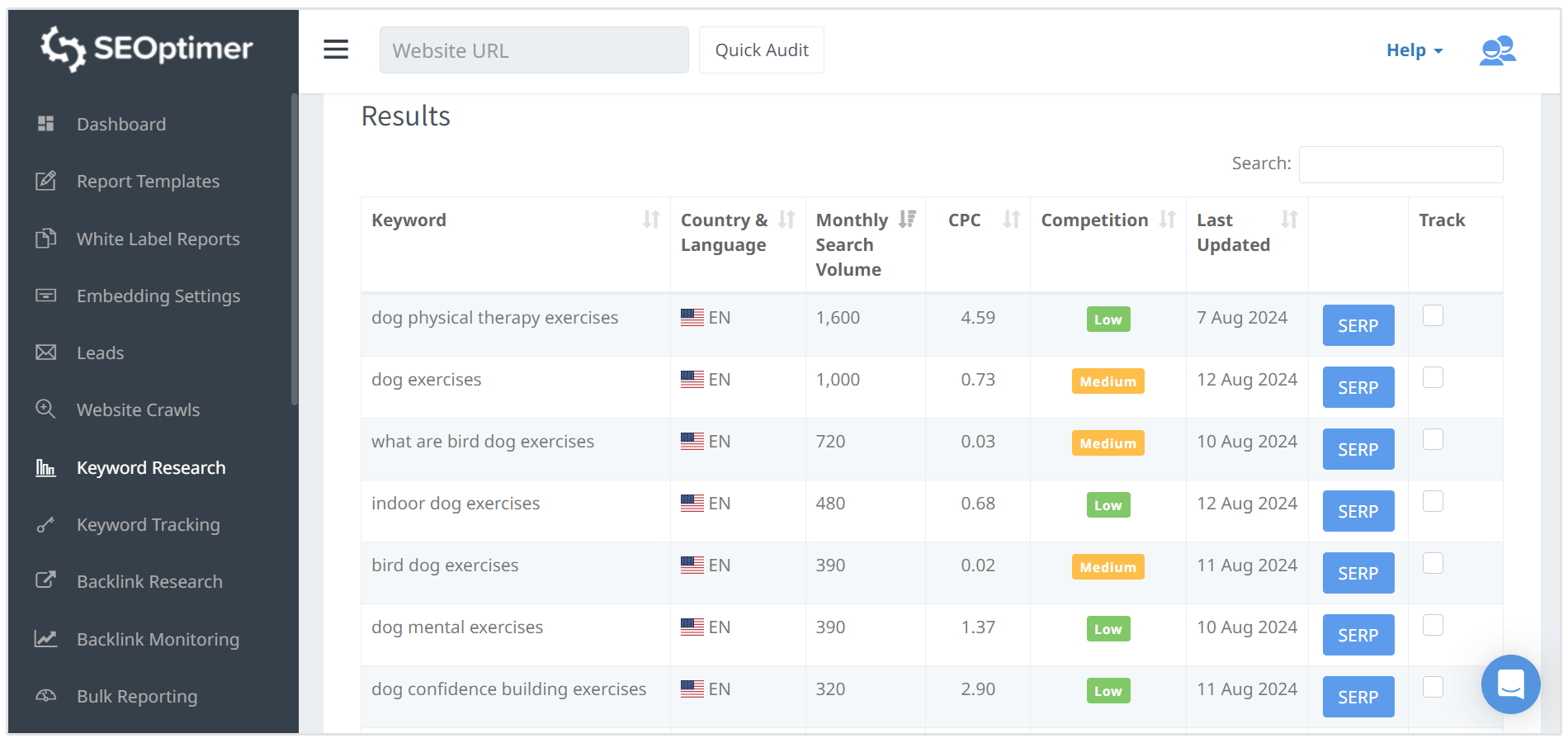
Then, I'm going to sort the results to find the lowest monthly search volume keywords, these are typically your long tail keywords.
The keyword “dog confidence building exercises” looks like a great long tail keyword, it’s got relatively good search volume and low competition.
You can also click the blue "Results" button to see a quick overview of the current SERP for the keyword you've chosen.
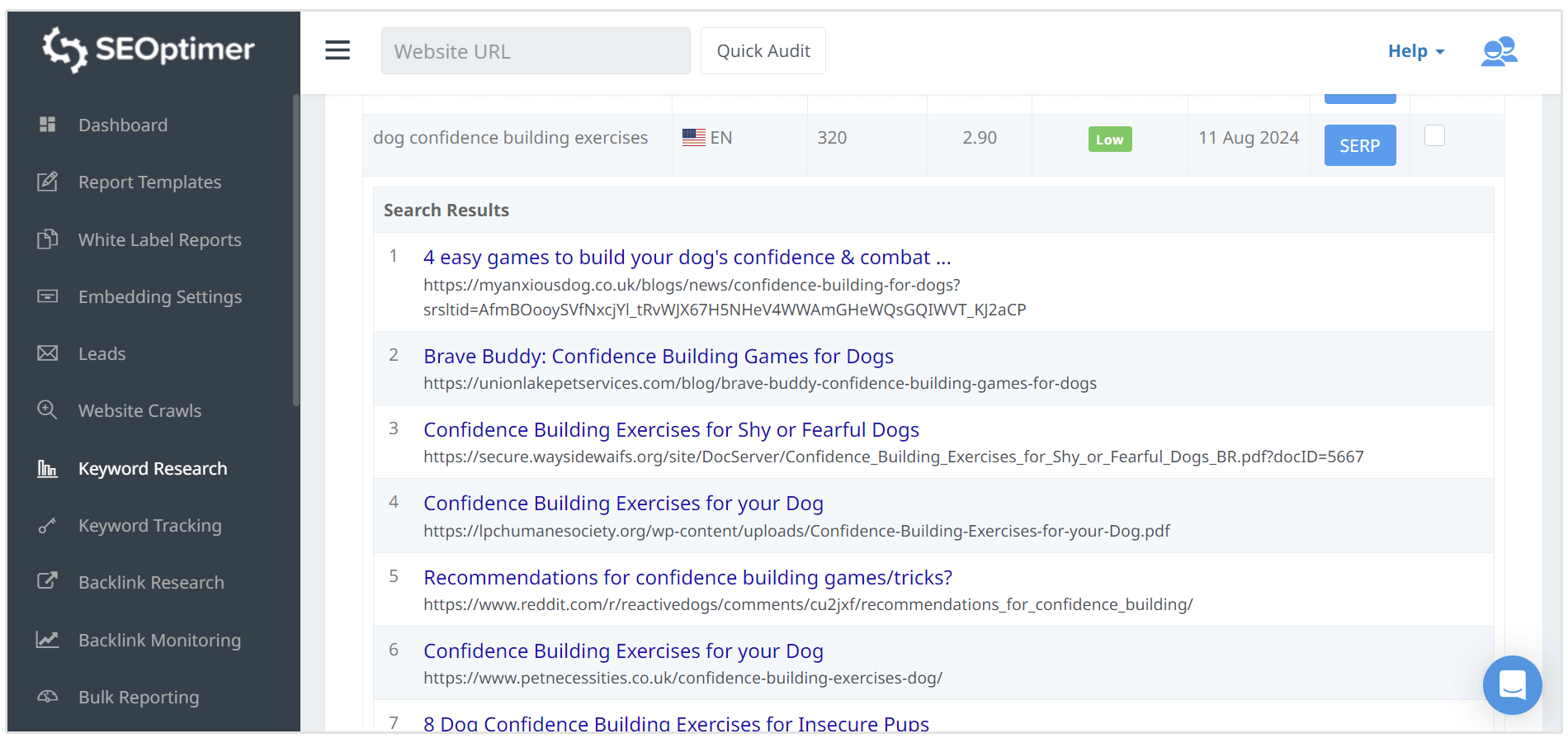
Check Your Competitor's Keywords
You can also use your competitor's keywords as inspiration or a starting point to find long tail keywords.
SEO competitor analysis is very much effective in finding keyword gaps. These are opportunities where your competitors are ranking for keywords that you haven't targeted yet.
- Anna York, SEO Expert
Again, I'm going to show you how to do this using SEOptimer's Keyword Research tool.
- Go to the Keyword Research tab on the left of your dashboard.
- Next, click on the "Search By URL" option on the top of the page.
- Add the URL of the competitor that you'd like to study.
- Our tool will show you the keywords they're using and the ones they're currently ranking for.
So, let's imagine that you’ve got an online store selling baby products and you want to create a post about baby food storage tisp. I found a competing post from Happiest Baby on how to store baby food.
By adding the URL of the post in our keyword research tool, I found these keywords:
- how long is pureed food good for
- how long can pureed food be kept in fridge
- can you freeze little spoon purees
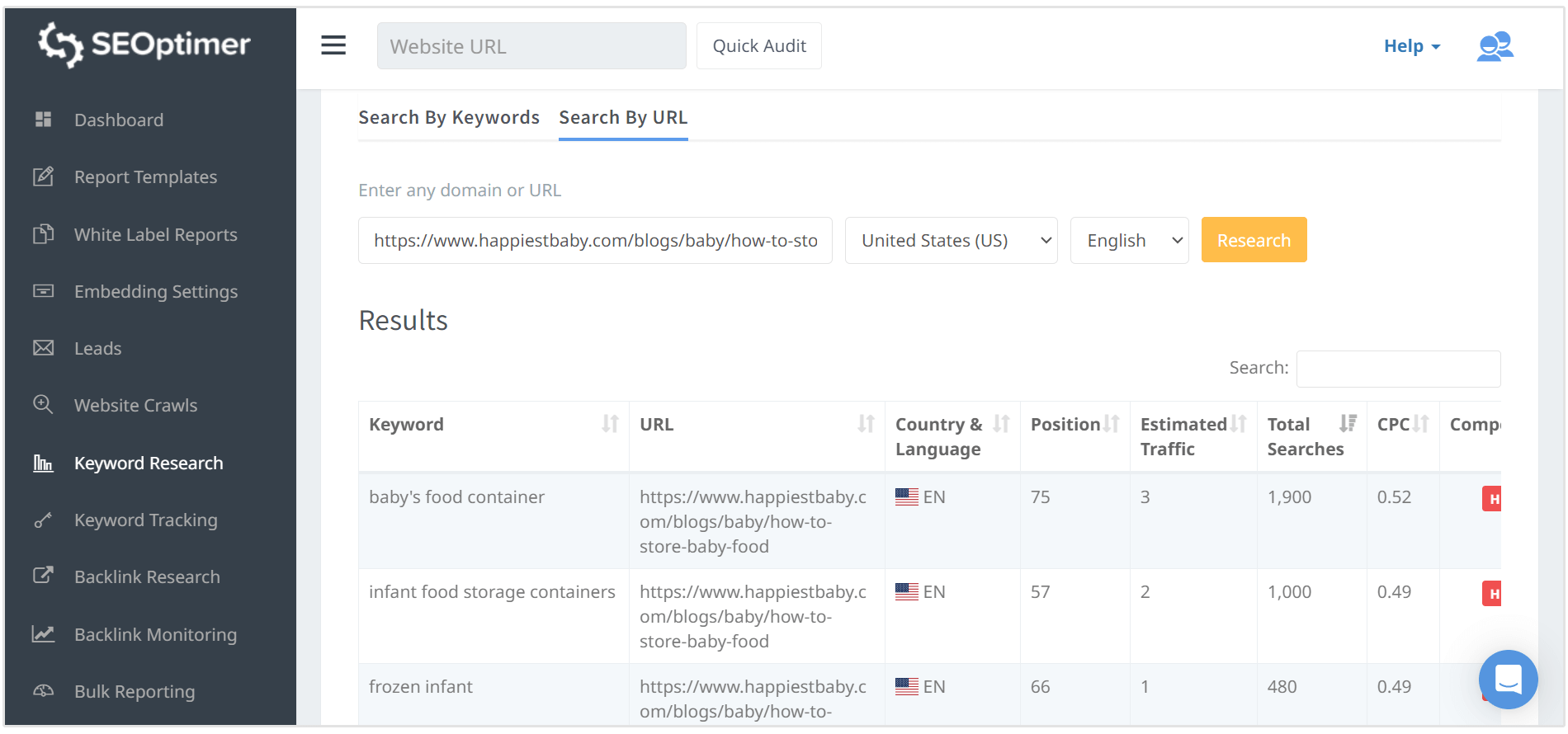
Check Google’s Autocomplete Suggestions
When you type a broad keyword into Google’s search bar, Google provides autocomplete suggestions that are often long tail keywords.
These suggestions are based on real user queries, making them valuable for targeting specific search intent.
For instance, let's imagine that you own a blog about how to grow succulents. By typing the broad keyword "how to grow succulents" into Google, you get the following suggestions:
- how to grow succulents from leaves
- how to grow succulents in water
- how to grow succulents from seeds
- how to grow succulents indoors

All of these are great content ideas for different blog posts.
Look at “People Also Ask” and “People also search for”
Like the previous suggestion, you can also use Google to find additional long tail keyword ideas.
After searching for a broad keyword on Google, scroll down to the “People also ask” section or the “People also search for” at the bottom of the page.
So for the keyword "how to grow succulents in water", you get the following People also ask questions:
- Can you grow a succulent in just water?
- How do you keep succulents alive in water?
- How long should succulents sit in water?
- How to grow succulents from cuttings in water?
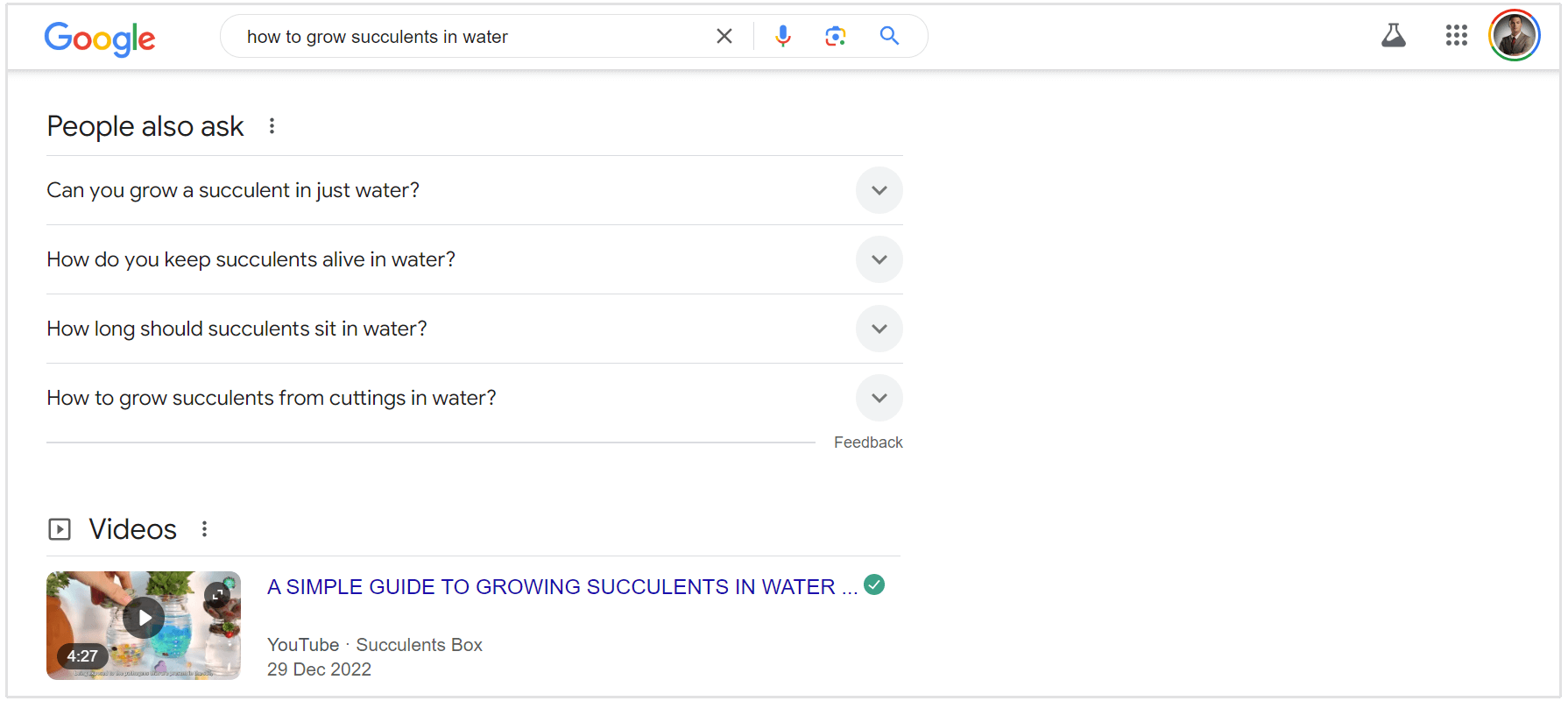
Scrolling down to the end of the SERP, you'll find the "People also search for" section with additional long tail keyword ideas.
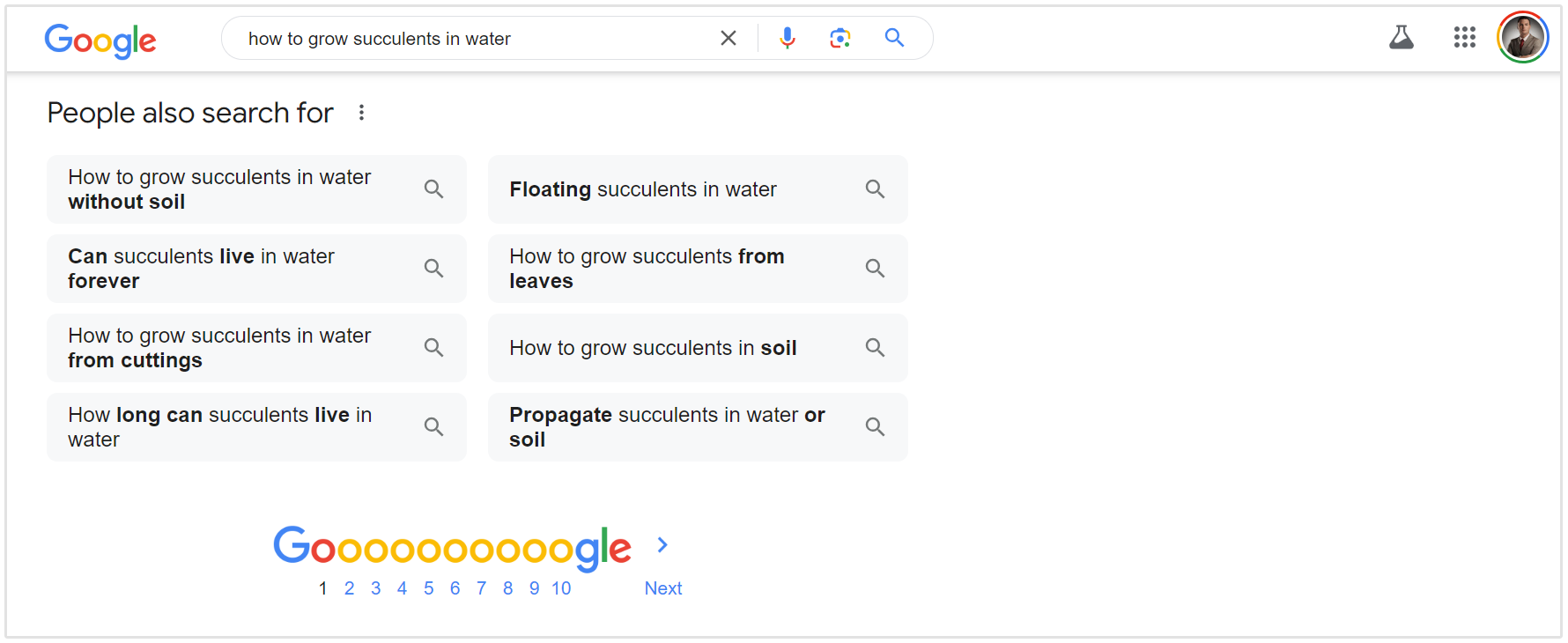
These sections provide insights into what users are searching for, often revealing useful long tail keywords or information that you could add to your page.
Leverage Forums and Q&A Sites
You can also check forums and Q&A sites to find commonly asked questions that are relevant to your business or website.
Industry forums are where you can find real customer questions, opening up new topics.
Visit forums like Reddit, Quora, or niche-specific discussion boards. Look for questions and discussions related to your topic.
For instance, let's imagine that you've got a lawncare and landscaping business. You can find relevant questions to create content on from sites such as Reddit.
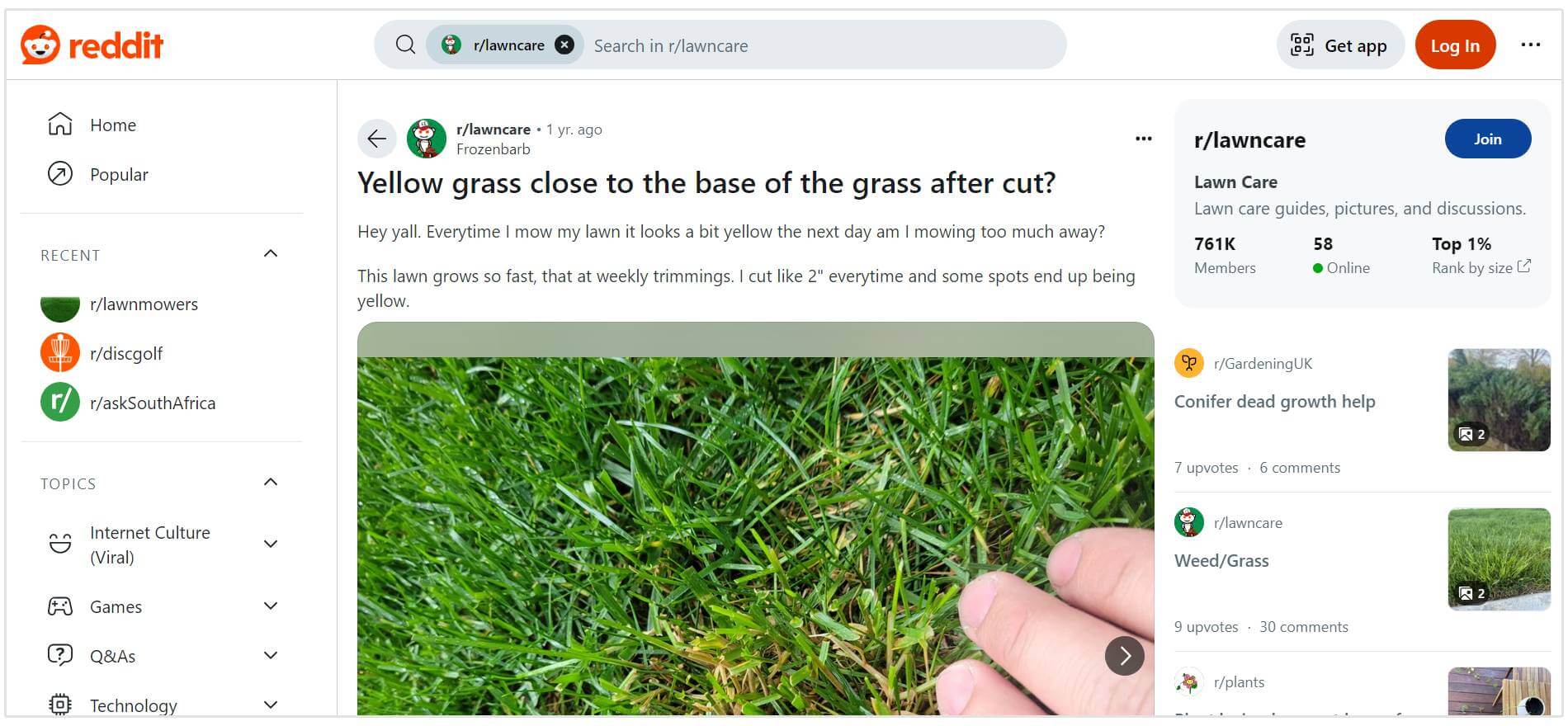
There are entire subreddits with thousands of people actively asking for advice or help with their landscaping.
The questions people ask on these subreddits or forums can often be great long tail keywords. Additionally, it's really easy and quick to find these keywords.
Use Google Search Console
Analyze the performance of your existing content in Google Search Console.
Look for search queries that are driving traffic to your site, especially longer phrases. These queries can be turned into long tail keywords to optimize your content further.
To do this, head to your Google Search Console dashboard.
Then under Performance, click on Search results. Here you will see the queries that are driving the most search traffic to your site.
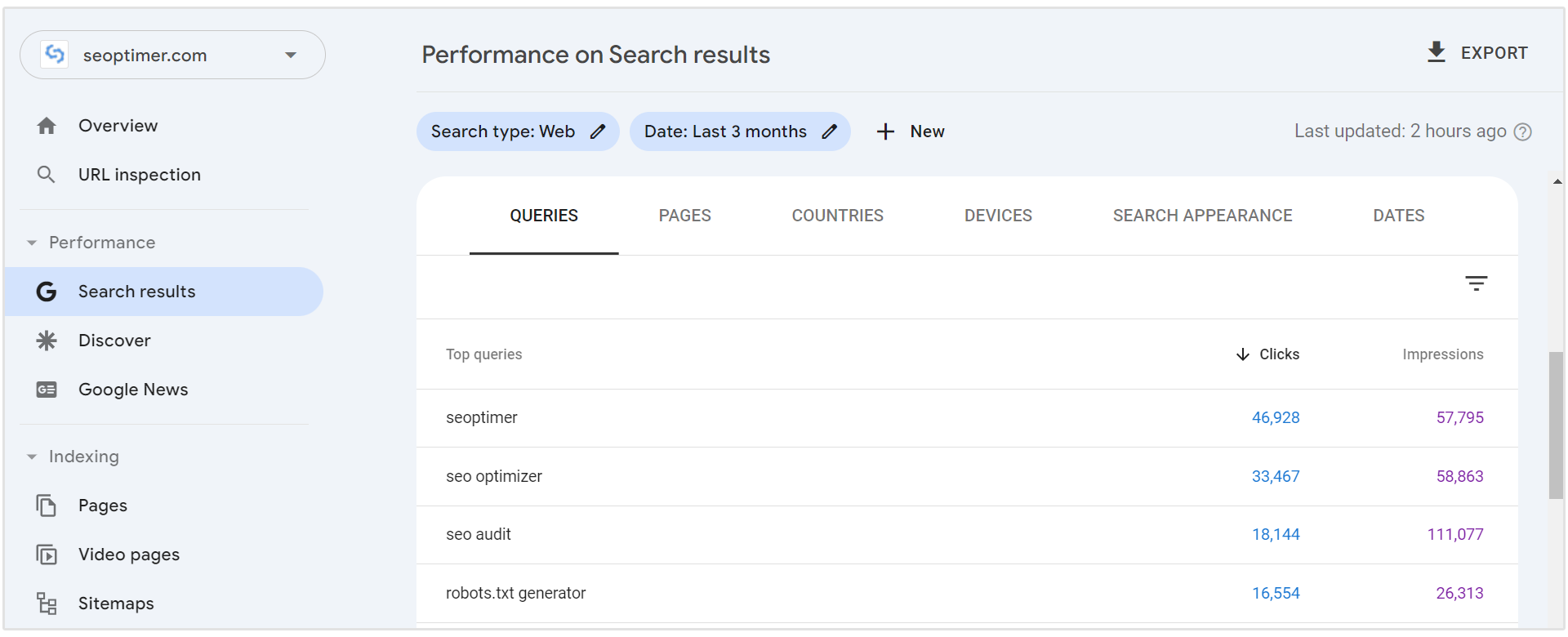
Sometimes a page on your website will rank for a long tail keyword without you purposefully targeting that keyword. In such a case, I would take that keyword and create its own unique page.
What Would Your Audience Ask?
Think about the specific questions your audience might ask.
Long tail keywords often take the form of questions, such as “how to train a puppy not to bite” or “what is the best time to post on Instagram.”
Creating content that answers these questions can attract highly targeted traffic.
If you've got a customer support service, you can also find relevant long tail keywords by creating a database of all your customer questions.
How to Find Short Tail Keywords
Finding short tail keywords is easier than finding long tail keywords. Ideally, you already have a list of broad keywords that you'd like to target.
These could be names of products you sell or services you offer. Or they could be content opportunities that you'd like to pursue.
Regardless, here's how you can further your research to find short tail keywords using our Keyword Research tool:
- Type a general broad term in our keyword research tool.
- Next, sort the results by monthly search volume from highest to lowest.
- The keywords at the top of the results are the short tail keywords most closely related to the broad keyword you added.
For example, let's say you have an online store selling pickleball gear and other accessories.
By adding the keyword "pickleball paddles" to our keyword research tool, you'll get the following results, sorted from highest search volume to lowest:
- paddles for pickleball
- pickleball paddles
- top pickleball paddles
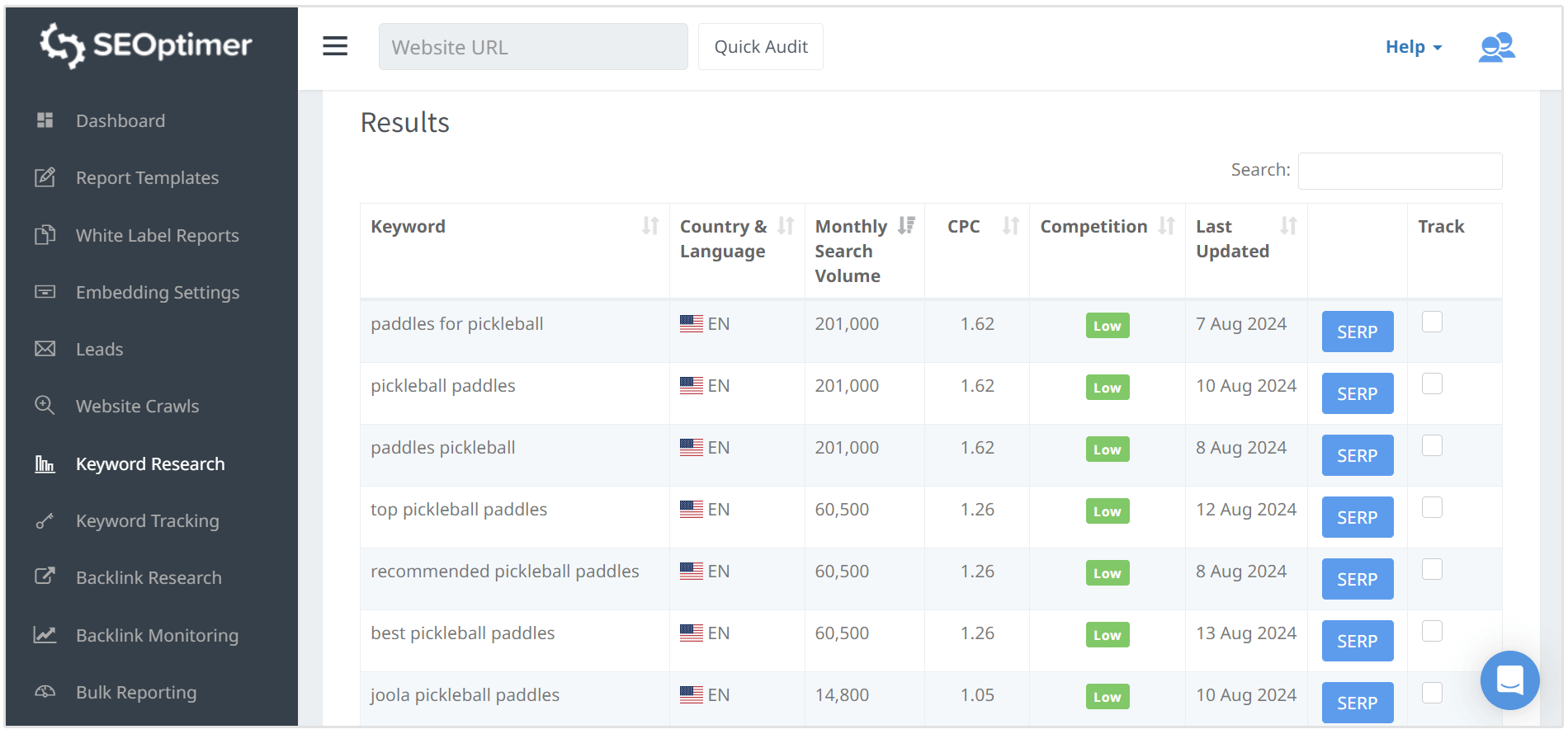
You can now use these keywords as alternative short tail terms on product pages or in content.
Long Tail vs Short Tail Keywords: Which is Best?
When it comes to choosing between long tail vs short tail keywords, there’s no definitive answer to which is best.
Each type of keyword has its own unique advantages and disadvantages, and the right choice depends on your specific goals and situation.
Short tail keywords are great for driving large volumes of traffic because of their broad nature and high search volume. However, they are also highly competitive, making it a lot more difficult to rank for them, especially if you’re in a competitive niche.
On the other hand, long tail keywords have less competition and attract a more targeted audience. Because they are more specific, they often lead to higher conversion rates, as they attract users who know exactly what they’re looking for.
The downside is that long tail keywords generally have lower search volumes, meaning less overall traffic.
In practice, the best approach is to use a combination of both.
I would stick to using short tail keywords on important product or services pages. And long tail keywords on blog posts and informational pages.
That's not to say that you can't target short tail keywords in blog posts. If the competition for a short tail keyword is not that tough then you should definitely use that in a blog post.
Wrapping Up
There's no such thing as the best option when it comes to long tail vs short tail keywords.
Marketers and SEOs can benefit from using both of these types of keywords in combination with one another.
The key to success lies in striking the right balance between long tail and short tail keywords.










